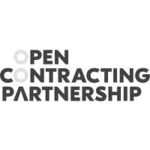Public Procurement
The public procurement module has been developed in collaboration with the Open Contracting Partnership to provide an improved mapping of:
- The extent to which comprehensive and detailed public procurement data is available around the world;
- The extent to which procurement data is being used.
This module builds on the Open Data Barometer indicator on public contracts data and seeks to examine the connections between public procurement data and other key elements of public data infrastructure, including company information and public finance data.
To find out more about the development of this thematic module, you can consult our research handbook.
Partners

To what extent is detailed structured data on public procurement processes available as open data?
Existence
-
Is this data available online in any form?
- Data is not available online.
- Data is available, but not as a result of government action.
- Data is available from government, or because of government actions.
Elements
Kinds of data:
- Procurement related to goods and services is included.
- (No, Partially, Yes)
- Procurement related to public works is included.
- (No, Partially, Yes)
- The planning phase is covered.
- (No, Partially, Yes)
- The tender stage is covered.
- (No, Partially, Yes)
- The award stage is covered.
- (No, Partially, Yes)
- The contract implementation stage is covered.
- (No, Partially, Yes)
Data fields and quality:
- The data contains identifiers or other features that connect together data on each stage of a single procurement process.
- (No, Partially, Yes)
- The data contains names and unique identifiers for companies awarded contracts.
- (No, Partially, Yes)
- The data contains start and end dates for tender processes and/or contracts.
- (No, Partially, Yes)
- The data contains the value (cost) of each tender, award, or contract.
- (No, Partially, Yes)
- The data contains, or can be linked to, information on spending against the contract.
- (No, Partially, Yes)
- The data contains a description of the goods, services or works being procured.
- (No, Partially, Yes)
- The data is published according to one or more relevant data standards.
- (No, Partially, Yes)
- The data contains links to accessible tender, award, or contract documentation.
- (No, Partially, Yes)
Data openness, timing, and structure:
- Dataset is available free of charge.
- (No, Partially, Yes)
- Data is openly licensed.
- (No, Partially, Yes)
- Data is available in all the country’s official or national languages. If the country has no official or national languages, data is available in the major languages of the country.
- (No, Partially, Yes)
- There are accessible and open official tools available to help users explore data.
- (No, Partially , Yes)
- Data is timely and updated.
- (No, Partially, Yes)
- Historical data is available that allows users to track change over time.
- (No, Partially, Yes)
- Data is provided in machine-readable format(s).
- (No, Partially, Yes)
- The machine-readable dataset is available as a whole.
- (No, Partially, Yes)
Negative scoring:
- This information is missing required data.
- The availability of this data has been affected by government response to COVID-19.
- (No, Partially, Yes)
Extent
-
How comprehensive is the data assessed for this question?
- The data assessed covers a very limited number of public procurements and few other sources of data are available.
- The data assessed covers, or is representative of the data available for, a significant number of public procurements but there are large gaps in coverage.
- The data assessed covers, or is representative of the data available for, a large proportion of public procurement but some gaps in coverage exist.
- The data assessed covers, or is representative of the data available for, almost all public procurement.
To what extent is there evidence of government procurement data being analyzed to improve procurement practice?
Existence
-
To what extent is there evidence of this kind of data use?
- There is no evidence of this use.
- There is evidence of isolated uses or pilot projects.
- There is evidence of multiple different uses involving different organisations.
- There is evidence that these uses are widespread, regular and embedded.
Elements
Kinds of use:
- There is evidence of government procurement data being presented through data-driven dashboards.
- (No, Partially, Yes)
- There is evidence of government procurement data being used for red flag analysis.
- (No, Partially, Yes)
- There is evidence that government procurement data is being analyzed to improve access to procurement opportunities for marginalized groups.
- (No, Partially, Yes)
- There is evidence of government procurement data being analysed to support sustainable / environmental procurement.
- (No, Partially, Yes)
User groups:
- There are examples of government using data in these ways.
- (No, Partially, Yes)
- There are examples of civil society using data in these ways.
- (No, Partially, Yes)
- There is evidence of private sector using data in this way.
- (No, Partially, Yes)
Specific features:
- At least one of the examples cited appears to make use of open procurement data.
- (No, Partially, Yes)
- At least one of the examples identified makes use of open beneficial ownership data.
- (No, Partially, Yes)
- At least one of the examples identified describes using artificial Intelligence or machine learning to process data.
- (No, Partially, Yes)
Extent
-
There is evidence that these uses have had or are having meaningful positive impacts.
- No
- Partially
- Yes
